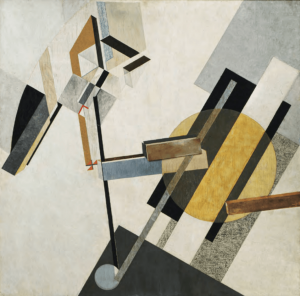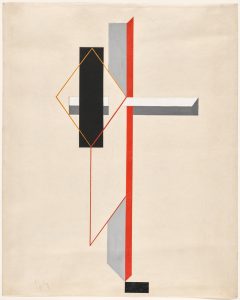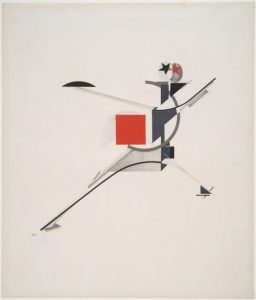


Constructivism was a rejection of the idea of autonomous art, with Vladimir Tatlin wanting to construct art. The movement was in favour of art as a practice for social purposes, and had a great effect on modern art movements of the 20th century, influencing major trends such as De Stijl movement, which I will briefly touch on later.
Constructivism encouraged the creation of art from scratch, with a mix and match of different materials. This movement mainly focused on geometric shapes and abstract forms, and works in this era were far from being objective and representational. There was also a focus in making useful and pragmatic items.
Below attached are artworks by El Lissitzky, an artist in the movement. His works heavily rely on the usage of geometric shapes, and are highly abstract.


Constructivism influenced another art movement, De Stijl greatly. De Stijl focused on straight lines, geometric shapes (specifically squares and rectangles) and primary colour (red, blue, yellow) alongside black and white. Attached below is an artwork by Piet Mondrian, an artist that was largely influential in the De Stijl movement.

